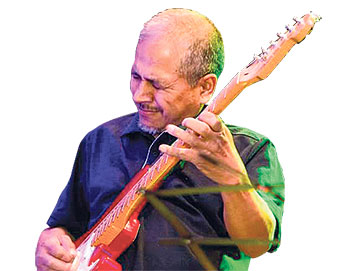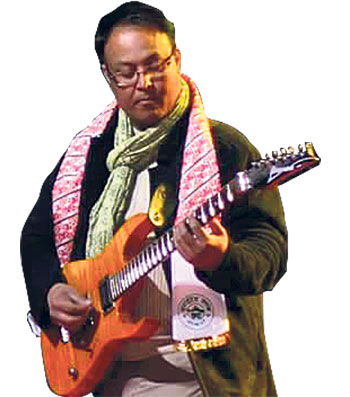Bauddha: A culinary paradise
5 years ago

5 years ago

5 years ago

5 years ago

KATHMANDU, June 21: A look back to the past shows only a handful of options that allowed you to indulge in music. Mostly because records the labels were either inaccessible or priced beyond the capacity of many, enthusiasts were bound to rely upon the scratchy radio bandwidth shuffling through their playlist. But with time, music became more accessible, in the due course, encouraging many to pursue it professionally.
The gradual transition also paved paths for multiple genres, and styles which were never heard of before. A new wave of variance further induced artists to experiment with different grooves, beats, and melodies. As a result, the contemporary Nepali music boasts an assemblage of styles ranging from the ethnic melodies to hip-hop grooves, power-packed rock ballads, and computer-generated vibrations.
Nepali guitar virtuoso, Jyoti Ghimire, is amused to see music molding itself in par with the changing technology. He admits, “Things would have been much simpler for us if the internet had influenced our music back then. YouTube has made lives of many musicians simpler.”
“Growing up, learning to become a rock star seemed like an impossible quest. We destroyed many tapes just to note down a single line of lyric or memorize the simplest riffs. Also, your budget forbade you from the luxury of buying music cassettes,” the guitar player added.

The live scene
Ghimire, however, was full of praises for the younger generation’s knowledge of music. The shredded licks amplifying throughout the Thamel streets explain the degree of technical proficiency among these musicians. Moreover, it’s uncommon for these performers to step out of the scale chart while flaunting speed, and technicality.
Abhishek Shankar Mishra leads several of such technical rock and blues groups. He is pleased that Thamel has provided a platform to a number of bands to flaunt their musical geniuses. Speaking about the opportunities the live music juncture has provided, he stated, “People are gigging to pay their bills, to develop their musical skills, to get better, to get more. Thamel is a beautiful, enigmatic place that I am still in love with.”
Following the success of the live music scene in Thamel, many other venues in Durbar Marg, Lazimpat, Patan, and Pokhara have introduced live hubs of their own. However, while most musicians and music buffs admire the opportunity these venues provide, many despise the commercialization brought due to the influences of Bollywood, and RnB music.

In the studio
While the live scene has a vibrant tale, the studios have a different story to tell. Music composer and arranger Bhupendra Bajracharya finds a vast range of artists, and directors seeking his professional assistance. In his long career as a music arranger, he has seen a good number of musicians who know their sound and ask for great precision in their work. Meanwhile, the number of music directors, and singers, especially new to the scene, apathetic of their requirements, is equal.
He jokingly stated, “There are some who bring copies of Hindi and English songs asking me to copy exactly what’s there. Even worse are those who are dumbfounded when I ask what they want in their song.” As Bajracharya casually walked me through the process of recording, I promptly asked, “And what about cover songs?”
The craze for cover songs
The seasoned arranger/composer calmly explained that he did not want legal notices in his doorsteps because of copyright issues. Further, he said that he was not keen on working on cover songs either. However, the current cover trend has split the music fraternity into two.
Many artists have had their share of fame by rearranging evergreen hits into their own. Jyoti Ghimire didn’t seem pleased with the trend. He didn’t even hesitate from accusing cover singers, and track singers, of creating a mess of the Nepali music industry. “Both cover artists and track singers lack originality;” he expressed his dissatisfaction.
On the other hand, ‘Bistarai Bistarai’ singer Rohit John Chhetri shared a contradicting opinion. He stated that music, an art genre, had no boundary. Chhetri feels that everyone is free to express their feelings and emotions through art, but still insisted that performing covers required a lot of responsibilities.
Ethnic beats
Many of such covers come in as instrumentals. More often than not, the young cover artists are seen mixing intricate Nepali folk instruments with a guitar or keyboard. Many credits the folk ensemble Kutumba for introducing the trend, and Kutumba’s manager, Arun Gurung, proudly agrees to the claim.
“Kutumba’s main objective has been to popularize and showcase traditional Nepali folk instruments and music.” The contemporary style of presenting Nepali tunes to music lovers has enabled Nepali music to travel across seas. Gurung further admitted, “Nepali music was not played or presented in the same way before us. We are proud to be the flag bearers of this initiative which has influenced many hundreds to take up folk instruments.”
Leave A Comment